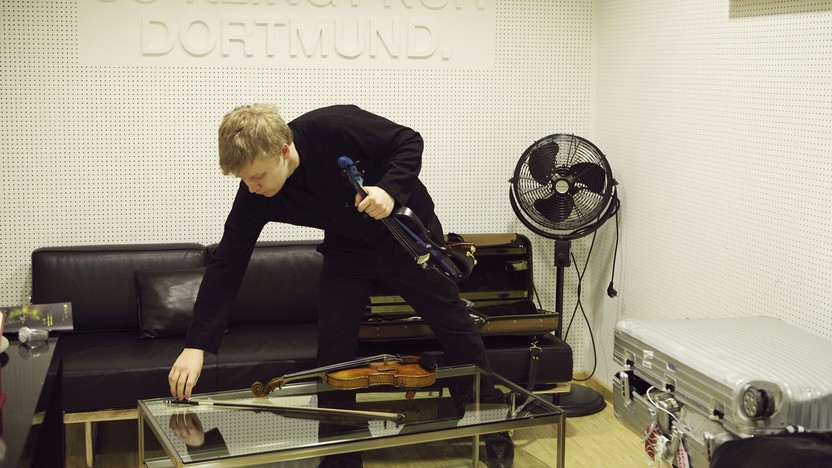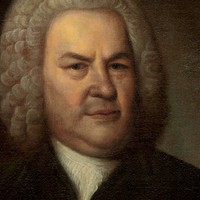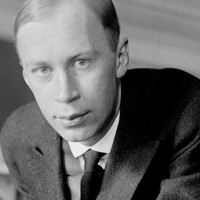Happy Hour Concert: Kuusisto, Bach and Prokofiev

Sponsored By

Sponsored By

 Listen to Audio
Listen to Audio
Just like Johann Sebastian Bach, Richard Egarr was a choir boy who gravitated to the organ, but both of these polyglot musicians were destined for wider opportunities than the limited confines of a church’s organ loft.
After joining his many relatives in the music business and rising through various Lutheran churches as an organist, the 32-year-old Bach landed a job as the Kapellmeister for a prince in Cöthen, where he had a small but distinguished private orchestra at his disposal. Even after that step up, Bach was still eyeing his next move, and he sensed an opening when he traveled to Berlin in 1718 to buy a new harpsichord. On that trip, Bach met and played for Margrave Christian Ludwig, the Duke of Brandenburg; two year later, Bach followed up with what amounted to an unsolicited job application, in the form of six concertos featuring various soloists.
The Duke didn’t even bother to send a rejection letter, and the Brandenburg Concertos languished on the shelf of his private library for over a century before they were re-discovered. And instead of following the fork in the road that might have led to a lifetime of royal service, Bach’s path returned him to his roots in the Lutheran church. He soon earned the coveted position in Leipzig that he kept for the rest of his life, directing music and training choir boys for the city’s principal churches.
Egarr’s journey also centers around a harpsichord: the one in the chapel at Clare College, Cambridge. Having never played one before, he started experimenting on it for fun, and was soon joined by a fellow conservatory student who brought along a viola da gamba and some scores photocopied from Baroque manuscripts. When a new violinist enrolled the next year, Egarr heard him playing Shostakovich and thought, “This guy’s gotta play Baroque music.” Egarr made it happen by putting up a poster at school announcing that they would be performing together. The violinist was Andrew Manze, and the program included Bach’s Brandenburg Concerto No. 4. It was Egarr’s first time performing the piece, and Manze, playing on a Baroque bow for the first time, actually dropped it in the middle of the fiendishly difficult finale. In the 40 years since, Egarr and Manze have remained kindred spirits who continue to reshape and invigorate the practice of historically informed performance.
Throughout his career, whether playing harpsichord in an accompanying continuo role or leading as a conductor, Egarr has shown a fearless tendency to explore and experiment. It makes him especially well-suited to interpret the Brandenburg Concertos, which are themselves a series of experiments in tone color and instrumentation.
Whereas the seminal concerti grossi of Corelli and those of his many imitators tended to use a consistent set of soloists — usually two violins and cello — Bach’s concertos all feature different instruments. The First Brandenburg Concerto uses the largest ensemble, including a pair of corni da caccia, or “hunting horns,” in the group of soloists. Three oboes, a bassoon and a violino piccolo — a slightly smaller cousin of the violin tuned a minor third higher — round out the solo group, while strings and basso continuo contribute supporting music. Bach adapted this concerto from the opening Sinfonia of a secular cantata from 1713, Was mir behagt, ist nur die muntre Jagd (“The lively hunt is all my heart’s desire”), and the horns and woodwinds impart a jovial, outdoor ambience that can get downright wild, as can be heard in the groundbreaking recording that Egarr led with the Academy of Ancient Music, playing on period instruments with single strings instead of sections.
So how does Egarr translate his signature freedom of expression and historical authenticity to a performance with a larger orchestra using modern instruments? As he sees it, “The Saint Paul players are a wild bunch in the best possible way. They’re incredibly open and keen to push boundaries when they’re playing. They love going for it.” In the Sixth Brandenburg Concerto, where modern cellos and bass cover the parts written for the similarly-pitched viola da gamba and violone, Egarr talks to the musicians about how to bring out a more nasal tone in the spirit of those older instruments, to maximize the contrast with the solo parts for violas and cello. He links his interpretation to an 18th-century allegory about three princes (the violas and cello) and three skeletons (the gambas and violone), and the very Lutheran idea of finding joy in death and the promise of heaven, noting that Bach wrote a cantata using a related musical theme that explored the same topic.
Egarr’s rigorous scholarship and musical flexibility go hand in hand. He points to the sources that show how tempo was a much looser construct before the twentieth century, and he encourages the freedom to push and pull the time. And he does this as an egalitarian member of the ensemble, playing from the harpsichord, instead of dictating from the front with a baton (a type of conducting that didn’t even exist until the 19th-century.) The place where he most gets to shine as an individual performer is the Fifth Brandenburg Concerto, which features flute, violin and harpsichord as soloists. Such a trio was a common chamber music ensemble at the time, playing works known as trio sonatas. The harpsichord contributes whirlwind solo lines, and it issues a monster of a cadenza at the end of the first movement. Unlike in a trio sonata, in which the harpsichord would typically have just a written bass line and some clues for how to improvise the right-hand harmonies, here the harpsichordist’s right hand plays its own melodic lines that intermingles with the flute and violin. In the finale, for example, after the violin and flute take the first two entrances of a fugue subject, the two hands of the harpsichordist serve as the third and fourth voices.
The Third Brandenburg Concerto treats all members of the ensemble as soloists, with independent lines for three violins, three violas and three cellos supported by the basso continuo accompaniment. The equitable distribution of the material is especially clear in the first movement, in which the primary motive — a three-note figure that drops to the lower neighbor note and then returns to the starting pitch— cascades through the different voices. There are places like this within the Brandenburgs where Egarr sees it as essential to maintain the texture of one player per part that Bach would have used. Elsewhere, he embraces the opportunity to beef up the string sections, quipping that Bach “loved big orchestras, when he could get them.”
The Fourth Brandenburg Concerto — the one that launched Egarr’s Baroque career back in his school days — is one that benefits from a grand treatment. It helps that the solo instruments are ones that project well: violin, plus two parts identified as “echo flutes,” a mysterious term that appears nowhere else in Bach’s music. Scholars agree (for the most part) that the intended instruments were treble recorders, and that the “echo” label referred to the loud and soft alternations in the middle movement. In performances on modern instruments, flutes substitute for the recorders. The violin takes the flashiest material, demonstrating the deep knowledge of the instrument that Bach developed as a very strong violinist himself.
The Brandenburg Concertos are uncommonly intimate and unabashedly joyful, and for Egarr, it is especially gratifying to present them with The Saint Paul Chamber Orchestra, where, in his experience, “The audience really comes to share the music, and the orchestra is inviting people to come in and experience it. That’s an incredibly special thing to feel from an organization. The music is given with great love and honesty, and a desire to share what we do, which hopefully makes things better in the world.”
Aaron Grad ©2024
 Listen to Audio
Listen to Audio
Spending the summer outside of Petrograd in 1917, the 26-year-old Sergei Prokofiev challenged himself to compose without sitting at the piano, and he used Franz Joseph Haydn as inspiration for his svelte First Symphony. This score’s nickname as the “Classical” Symphony is well-deserved, and it served as an early harbinger of the neoclassical trend that swept through modern music in the 1920s.
A leading orchestra in Haydn’s day operated out of the royal court in Mannheim, Germany, and one of their signature moves was the rising “Mannheim Rocket,” which Prokofiev mimicked with the explosive arpeggio that launches his symphony. The second theme, played by the violins as they navigate absurdly wide leaps, shows how effectively Prokofiev used parody and exaggeration to simultaneously celebrate and skewer his source material.
The Larghetto second movement centers on a singing theme that enters in the clear treble of the violins. A contrasting middle section introduces a steady trickle of sixteenth notes, and then the closing passage interweaves both sounds.
Instead of a minuet or scherzo, the symphony turns next to a Gavotte, a staple of French dance suites from the Baroque era. The finale races to the finish on a stream of whirlwind eighth notes, with interlocking rhythmic patterns and seamless handoffs between sections that make for the musical equivalent of a relay race.
Aaron Grad ©2024
Happy Hour: 4–6pm
Concert: 6–7pm
Twin Cities audiences have a chance to hear this program that Artistic Partner Pekka Kuusisto and the SPCO will bring to New York’s Lincoln Center in May of 2020. Bach’s Third Brandenburg Concerto, with its rapid-fire counterpoint and interplay between each musician, serves as the inspiration for Anders Hillborg’s violin concerto, Bach Materia, written specifically for Kuusisto and his improvisational abilities.
Get driving directions and find nearby parking.
Find dining options close to the venue.
View seating charts to find out where you'll be seating.
SPCO concerts are made possible by audience contributions.
For exclusive discounts, behind-the-scenes info, and more:
Sign up for our email club!
